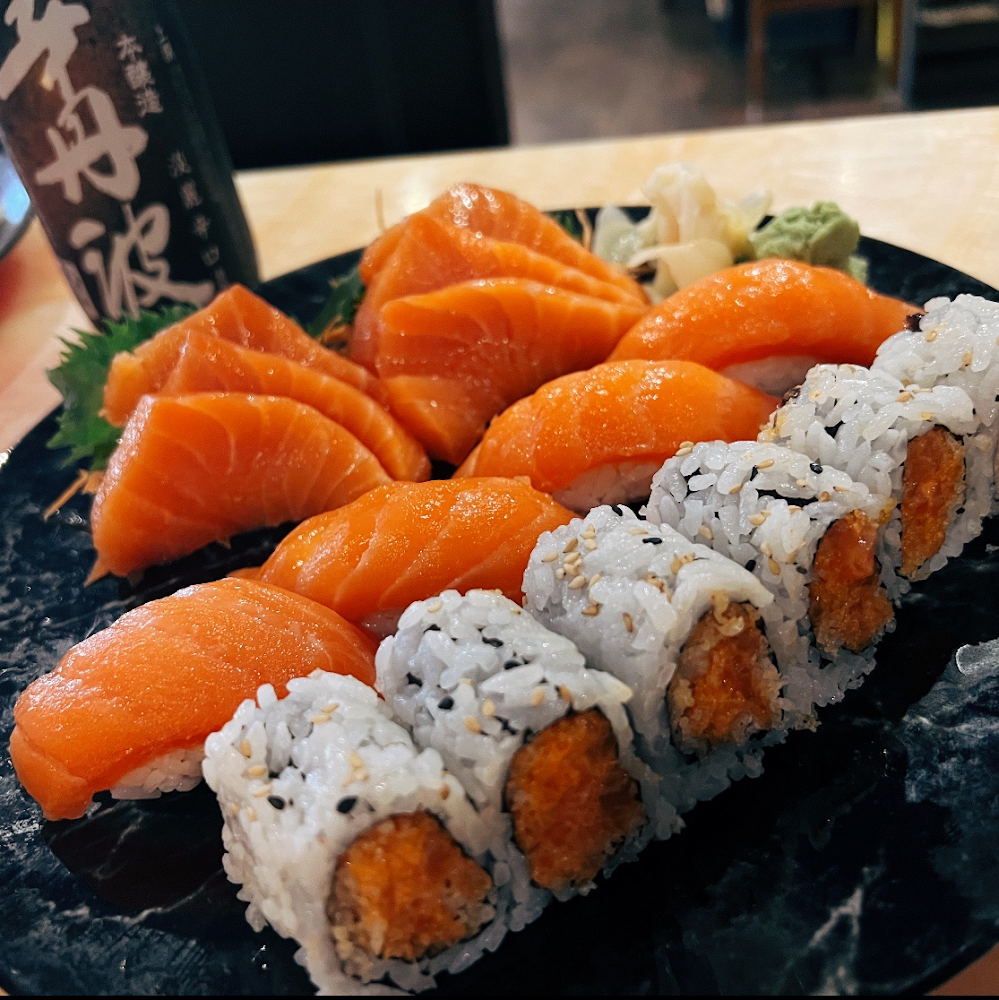When most people hear the word “sushi,” their mind jumps straight to raw fish. But is that all sushi really is? Not quite. While raw fish is a part of many traditional sushi dishes, sushi as a whole is much more diverse—and accessible—than you might think.
If you’ve ever felt intimidated by a sushi menu or confused by the terms like nigiri, maki, or sashimi, you’re in the right place. In this guide, we’ll bust the myths, define common sushi types, introduce beginner-friendly options (that don’t include raw fish), and give you a glossary of must-know sushi bar terms.
Whether you’re a sushi newbie or looking to expand your knowledge before your next dining experience, SushiSeek.com is here to help you confidently navigate the sushi world—and find the best sushi spots near you.
Sushi ≠ Raw Fish: Let’s Clear That Up
One of the biggest misconceptions about sushi is that it’s all raw fish. In reality, the word “sushi” refers to vinegared rice, not the fish. The rice is typically paired with ingredients like seafood, vegetables, egg, or tofu. While some sushi does include raw fish, many types are cooked—or even vegetarian.
Sushi Can Include:
- Raw fish (sashimi, nigiri)
- Cooked seafood (shrimp tempura, eel, crab)
- Vegetables (cucumber, avocado, pickled radish)
- Eggs (tamago, Japanese omelet)
So no, sushi is not just raw fish. It’s a diverse and customizable cuisine, which is why it’s so beloved around the world.
Types of Sushi Explained Simply
If you’ve ever looked at a sushi menu and felt overwhelmed, don’t worry. These are the most common sushi types you’ll come across—and what you need to know about each:
1. Maki (Sushi Rolls)
Maki is the classic sushi roll: fish or vegetables rolled in rice and seaweed (nori), then sliced into bite-sized pieces. You’ll see variations like:
- Hosomaki: Thin rolls with one ingredient
- Futomaki: Thicker rolls with multiple fillings
- Uramaki: Inside-out rolls (rice on the outside)
Great for beginners and highly customizable.
2. Nigiri
Small oval-shaped rice mounds topped with slices of fish, egg, or seafood. Sometimes comes with a dab of wasabi in between.
Example: Salmon nigiri, tamago nigiri.
3. Sashimi
Just the raw fish—served without rice. This is not technically sushi, but it often appears on sushi menus. Sashimi is best for those who enjoy the full texture and flavor of raw seafood.
4. Temaki (Hand Rolls)
Cone-shaped rolls of seaweed filled with rice, fish, and vegetables. These are meant to be eaten with your hands and are often more casual.
5. Chirashi
A bowl of sushi rice topped with a variety of raw fish and garnishes. Think of it as a deconstructed sushi roll.
Want to try these styles in your city? Use the SushiSeek.com Restaurant Finder to see local menus and sushi types near you.
Cooked and Vegetarian Sushi Options
Worried about eating raw fish? You don’t have to. Many sushi options are either fully cooked or completely plant-based. Here are some beginner-friendly choices:
Popular Cooked Sushi Items:
- Shrimp Tempura Roll: Crunchy, fried shrimp with sauces and veggies
- Unagi (Grilled Eel) Nigiri: Smoky, sweet grilled eel on sushi rice
- California Roll: Typically made with imitation crab (cooked), cucumber, and avocado
- Tamago Nigiri: Sweet Japanese egg omelet over rice
Vegetarian Sushi Options:
- Avocado Roll
- Cucumber Roll (Kappa Maki)
- Pickled Radish Roll (Oshinko Maki)
- Sweet Potato Tempura Roll
These options are perfect for sushi newbies, kids, or anyone unsure about trying raw seafood.
Glossary of Sushi Terms to Know Before You Go
Understanding the lingo can make ordering sushi way easier—and more fun. Here’s a quick glossary of terms you’ll commonly see at a sushi bar:
| Term | Definition |
|---|---|
| Nori | Dried seaweed used to wrap sushi rolls |
| Wasabi | Spicy green paste made from Japanese horseradish |
| Gari | Pickled ginger used as a palate cleanser |
| Shoyu | Soy sauce |
| Tamago | Sweet, layered Japanese egg omelet |
| Unagi | Grilled freshwater eel (cooked) |
| Tobiko | Flying fish roe (often orange, adds crunch) |
| Ikura | Salmon roe, larger and salty |
| Omakase | Chef’s choice—let the chef surprise you |
| Sake | Japanese rice wine (also means salmon, depending on pronunciation!) |
Bookmark this list or bring it with you the next time you try sushi!
Not All Sushi Restaurants Are the Same
Some restaurants cater to seasoned sushi lovers, while others are great for first-timers. How can you tell which is right for you?
Look for places with:
- Clearly labeled menus (cooked vs. raw)
- Beginner sampler platters
- Vegetarian or tempura options
- Friendly staff willing to explain items
Final Thoughts: Sushi Is for Everyone
Sushi isn’t just raw fish. It’s a flavorful, flexible, and fun dining experience that’s open to everyone—whether you’re a seafood lover, a vegetarian, or someone testing the waters for the first time.
From understanding the difference between maki and nigiri to confidently ordering cooked or veggie options, you’re now equipped to enjoy sushi without hesitation.
Looking for sushi near you? Explore the best local spots, hidden gems, and traveler-friendly sushi bars at SushiSeek.com—your guide to all things sushi in the U.S.

